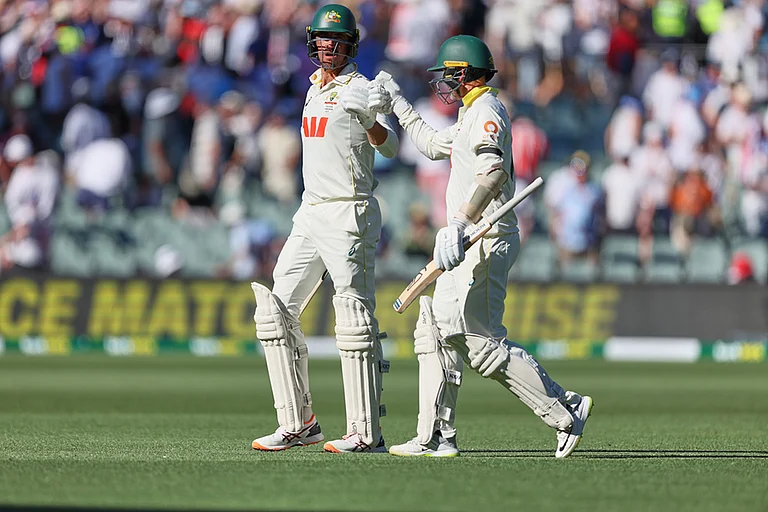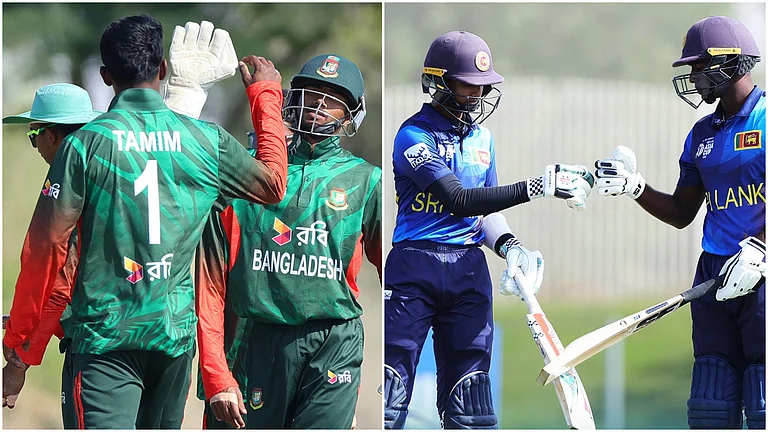Devi was from Quetta, now in Pakistan, where her father had been a physician. She was married off at the age of 16 to a penniless scion of a zamindari family from Dera Ghazi Khan whose land had been confiscated by the British. Barely was the wedding over when the warning signs of a holocaust that would overturn their near-normal lives appeared on the horizon. Bharati was pregnant when she heard the news of the Partition and communal rioting forcing people out of their homes. The news was frightening as thousands had died due to an emerging nationalism based on communal violence. As riots soon started in Quetta, they left, leaving behind their home and taking with them only their memories. Finally crossing to Delhi and finding sanctuary in a camp, the horrors of the Partition unfolded with stories of killings, rapes, suicides and violence against women narrated in forms Bharati had never heard of. A traumatised nation watched with Bharati helplessly as its women suffered.
If you look into the notion of refuge for women during Partition, the questions that arise after this atomised accounting of history by Bharati were of the welfare of thousands of widows, women abducted and orphans. It raised questions regarding which nation owned the women. What was their nationality? Would this question be answered without breaking down the social fabric of the two new nations? Who would provide humanitarian care to the women, the ever caregivers? There was no refugee policy in place as the country was not prepared to host millions who poured across the border. The refugee woman thus became a displaced person as the State’s rehabilitation and reconstruction work swung into place, led by a group of well-meaning women. As the State responded, it took over the mantle of charity and welfare provider and not citizen’s rights. The issue of justice from a gendered lens never became central to the discourse. For decades we have asked this question: was the response of the State to its women refugees not patriarchal and authoritarian?
The Partition of India brought in gendered nuances of refugee definitions not dealt with before. The nation came together to respond to the multiple crises facing it, the women however became central to the debate, as the conscience of the nation was aroused. At the core of this national discourse was the situating of its women as they were not outsiders, aliens in search of sanctuary, they ‘belonged’ to the new nation. There was no international Refugee Convention to adapt to, no agency to deal with women’s multifarious issues. However, unlike the 1951 Convention, which was to be androgenic, the issue of gender became central to the refugee question in India. For the newly-independent country, an investment in refugees, including women, became the symbol of a modern India. They were being represented not as a burden, but as a power symbolising the refugee as a displaced person.
It should have been a defining moment for situating a full-fledged refugee regime in place. However, the issues were different as most partition refugees had no option of return or repatriation. Non-refoulement was not a concern. Slowly the refugee became enshrined in the Directive Principles of State Policy and by the courts centred around Article 21 and the right to life and liberty. The refugee policy that governed the women, thus, was not a fundamental right, but left to the will of the State and supported by justice dispensation by the courts.
Rehabilitation of more than 10 million refugees was no easy task, especially for women in camps requiring minimum basic needs of water, food, medical care and sanitation facilities. The absence of the policy meant a large number of administrative orders. The most important outcome was the settlement of refugees not as individuals, but as groups. However, the gendered differentiations were obvious as unlike men, the women were categorised into widows, abducted, and ‘unattached’. It is quite obvious that the hierarchies of the patriarchal state were demarcated in this new refugee order.
Communal violence created honour killings of thousands of women as men took over the task of executioners and forced suicides to do away with the sexual abuse of their women by the ‘other’ community. What remained to be dealt with were widows whose husbands had been killed during the rioting (as per most estimates about 50,000 initially). The first move was to set up welfare activities for ‘unattached’ women. The aim was to overcome the stigma of widowhood in the public eye by providing them with skills and employment. However, it left no legacy in policy as it generated social abuse, as reflected in stories of the Manna ‘Liability’ Camp in 1964 in Madhya Pradesh, where more than 700 widows were incarcerated. As news of the Manna camp and ill-treatment of widows came out, some were shifted to places with worse conditions, as in Karnal in Haryana, and finally back to the traditional home of widows, Varanasi (Benares).
The most contentious issue, however, which is linked to the history of Indian refugee policy, was the abduction of about 100,000 women. Taken across the border or kept forcefully in the other country in a highly volatile situation, the women were forcefully married to their abductors. The State emerged as the patriarch, with the maternal agency taking control of their lives. In the absence of a refugee policy, The Abducted Persons Recovery and Restoration Act of 1949 (Act No. LXV of 1949) was introduced. Though no non-refoulement policy was required, for the first time in history in a reverse situation, the women were forced to come back to the State they were abducted from. A new parlance ‘abducted women’ in refugee history was introduced. Women committees took over the mantle of State power to force the women back even when they did not want to. The social stigma remained instituted as many women who had married their abductors and with children wanting to stay with their husbands were not allowed to decide, but were forced back into a stigmatised social order. Many were forced back and remarried in India and their children were sent to places such as Sharda Ashram. They thus came to represent the shame of the nation and not refugees with equal rights. They remained in both countries, at the lowest in the patriarchal hierarchical order. The members of the Constituent Assembly, however, recognised their contribution as refugees who paid the ‘price of freedom’.
Besides the above specific issues, the State’s gender response was targeted towards eradicating the problems faced by the different ‘categories’ of women holistically. They were provided cash, land, or housing as per their need. A major conduit was the Interim Compensation Scheme. The compensation, though insufficient and sometimes insensitive, did contribute to gendering the Indian refugee policy. For those left out of the women categories, life was difficult as when income was not enough, the women had to take to sex work. Children of abducted women were kept in ashrams, but contests over their dates of birth and nationality continued. The State’s magnanimity started to end over the years. The State had turned to major development projects, reducing its promises to refugee widow resettlement (as seen in the 1964 Manna camp). True, it was not the minimalist approach as in the western-supported 1951 UN Convention on Refugees, but was extended to social and economic rights. The question of women’s citizenship and right to stay and move freely anywhere in the country was taken for granted. However, by setting up a regime of charity, what was lacking was not the legal right, but the right to live with dignity. Though needs were met, it did not give India a gender-sensitive just refugee policy as it broke up women into categories on who needs help and who does not, the designation being decided by the State.
I owe gratitude to my family for sharing the story of Bharati Devi and to the writings of Chaman Lal Pandit, U Bhasker Rao and above all to Urvashi Butalia, Ritu Menon and Kamla Bhasin.
(Views expressed are personal)
(This appeared in the print as 'Orphans of Partition')
Asha Hans is former Prof of political science and Director women’s studies, Utkal University, Bhubaneswar





















